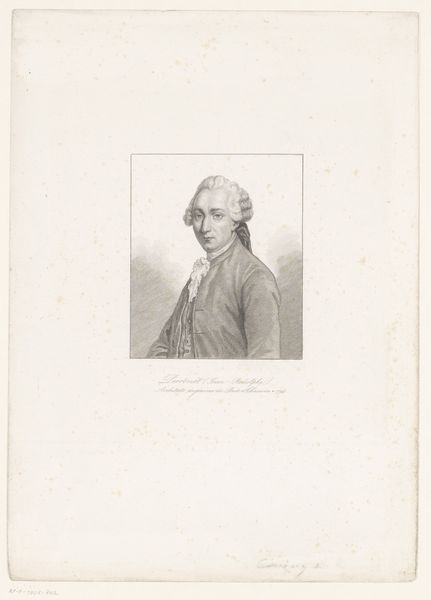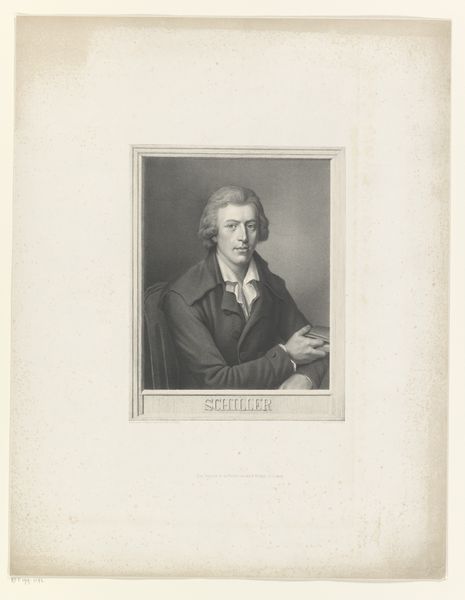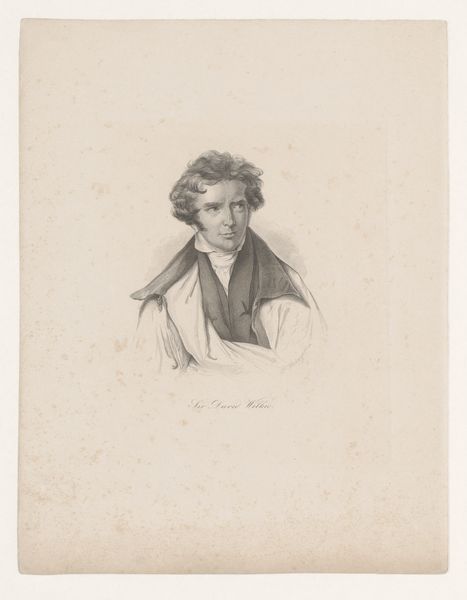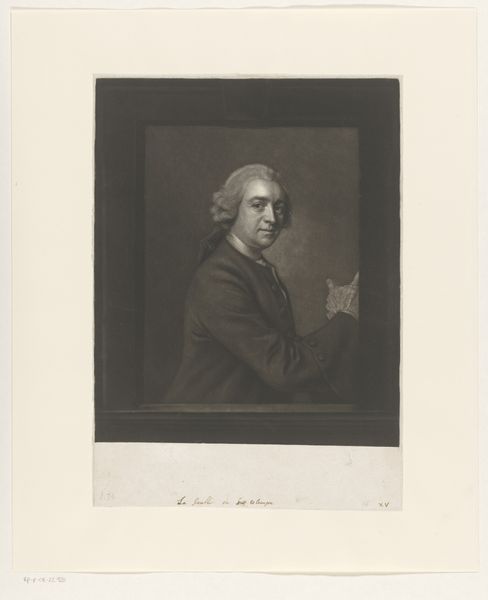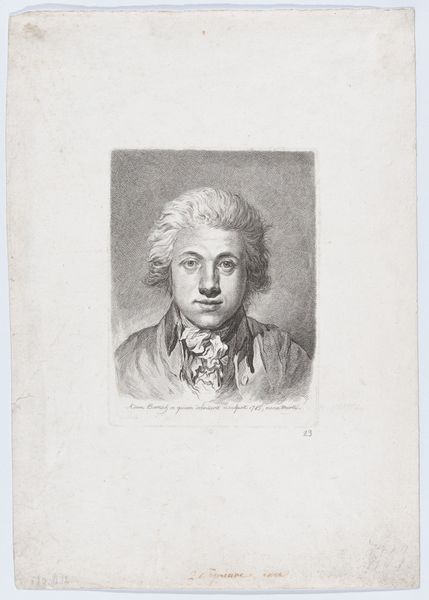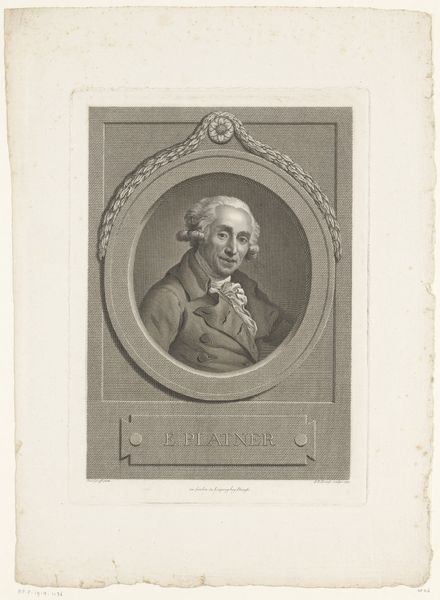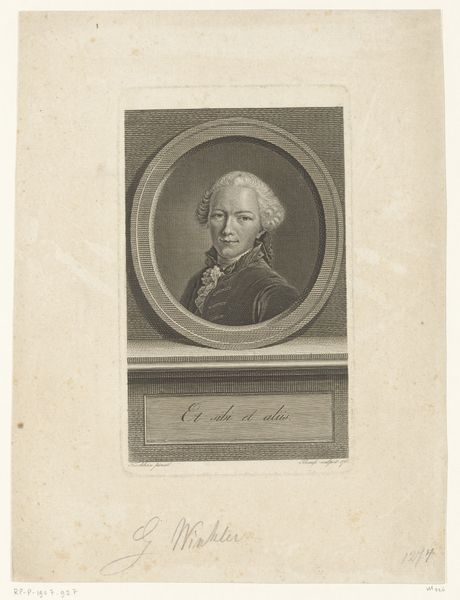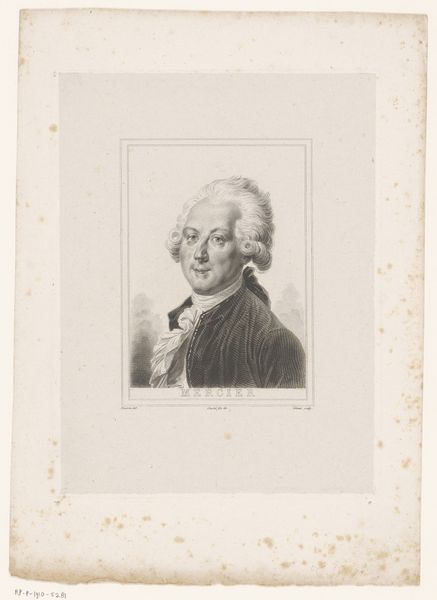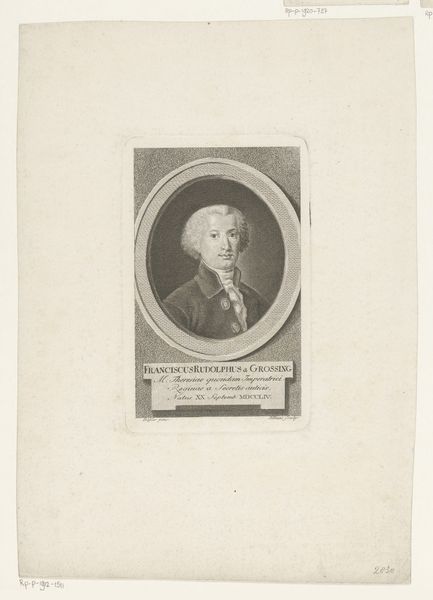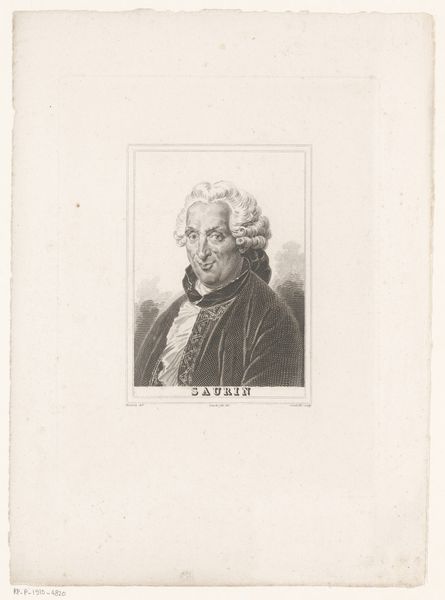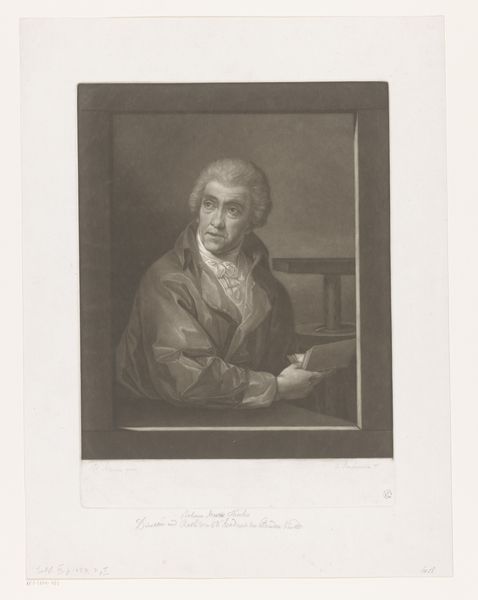
engraving
#
portrait
#
neoclacissism
#
historical photography
#
history-painting
#
engraving
Dimensions: height 242 mm, width 164 mm
Copyright: Rijks Museum: Open Domain
Curator: Welcome. Before us is a piece from the Rijksmuseum, "Portret van Friedrich von Schiller." Created sometime between 1840 and 1855, it's an engraving by Christian Hoffmeister depicting the famous German poet. What strikes you first about it? Editor: Immediately, there’s a sense of melancholy, even intellectual fatigue. The way Schiller rests his head upon his hand… It’s an archetypal image of the pensive creative, weighted by thought. Curator: Precisely. As an engraving, consider the laborious process. Each line, each shadow is etched meticulously, representing hours of skilled craftsmanship. The neoclassical style harkens back to an idealized past, a past steeped in reason. Editor: Yet that "reason" was deeply gendered and exclusionary. It’s fascinating to see Schiller, a figure lionized by the bourgeois, immortalized through this careful, crafted reproduction. How does the portrait itself reinforce ideas about male genius in 19th-century German culture? The languid pose still signifies intellectual prowess. Curator: A crucial observation. Engravings such as this were also readily reproduced. Its production would have depended on social, cultural, and financial parameters, making high culture more accessible and propagating Schiller's image within a broader society. Editor: But what gets lost in that propagation? What socio-political nuances become smoothed over as Schiller transitions into a marketable, consumable image of greatness? Whose version of greatness is amplified? The heroic image, in these contexts, suppresses others. Curator: Perhaps the image reduces the scope of an extraordinary and challenging history of its moment in favor of celebrating literary achievements that continue to find new publics for these stories of political change. Editor: Indeed. The tension between democratization via reproducibility and the reinforcement of existing power structures is really highlighted here. An aesthetic object becomes a vessel of ideas. Curator: Exactly. Looking closely at the materiality helps reveal the social structures that shaped its creation. I appreciate these works that are less grandiose in style. It can make one rethink traditional understandings of art history. Editor: And rethinking means constantly questioning the legacies and assumptions encoded in these images. This way, we have access to better tools for addressing persistent imbalances within culture. Curator: Absolutely. A perfect blend of artistic expression and an invitation for introspection!
Comments
No comments
Be the first to comment and join the conversation on the ultimate creative platform.
